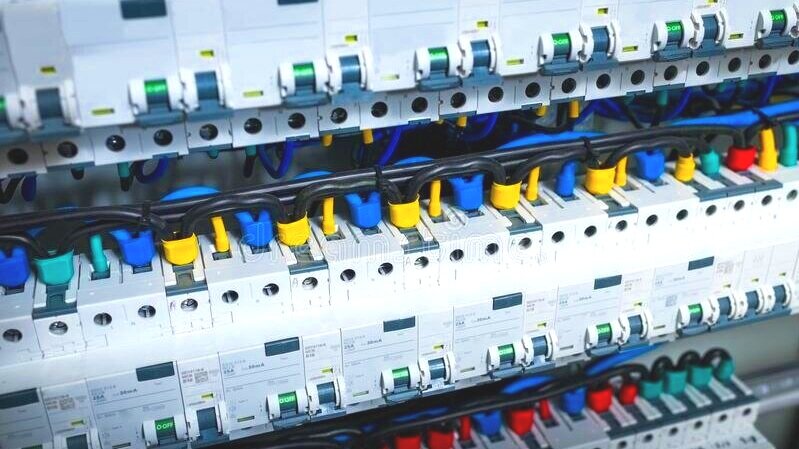Circuit Breakers
A circuit breaker is an indispensable appliance nowadays and a very important safety feature in your home. Every time electrical wiring in a building has too much power, the breakers cut off the flow until the problem is fixed and you can control all the electricity in your home from this one circuit breaker box, typically located in your basement.
Without the circuit breaker, electricity would be unworkable because of the chance for fires due to simple wiring issues and failures.
Understanding what it is, why it is necessary, and how it works may help you with troubleshooting home electrical issues and avoid dangerous situations.
The electric circuit breaker is, as we will see, an extremely easy solution to a potentially deadly issue.
How Does a Circuit Breaker Work?
Circuit breaker definition: a piece of equipment that is designed to automatically stop an electric current if it becomes too powerful or harmful.
It’s a big switch that safely distributes the power supply to your house. Other smaller sub switches that connect with specific areas of your house are also housed in the circuit breaker box. These small switches are referred to as breakers and ensuring electrical safety is their role.
If this cap is reached, the act of breaker tripping opens the circuit and prevents the flow of current to the specific electrical line or circuit in order to protect your home and family against fire and electrical injury.
Why is the Circuit Breaker Important for Home Safety?
The electricity flowing from the line of your utility provider passes through the meter and through the panel of the principal circuit breaker.
This leaves you and your family vulnerable to electrical hazards, which can cause significant harm to life and property from your home appliances, HVAC system, electronic devices, and electric shocks burns, and fires.
The circuit breaker panel provides electricity but is also equipped with safety features that protect the wiring due to overloading or heat buildup and prevent electrical shock and fire.
The circuit breaker panel's protection function protects your home and its occupants from all the dangers of improper grounding, short-circuits, voltage spikes, defective wiring, and damaged insulation.
Common Reasons Circuit Breakers Trip
Overloaded circuit: intended to handle a limited amount of strength. A circuit overload can occur when you produce more electricity than a circuit can accommodate.
Short circuit: it happens when the current flows back to the service panel via the formed wiring circuit, and back through the utility wires.
Ground fault: usually occurs when a hot wire, like a metal electrical box, contacts either the grounding wire or a grounded part of the device.
How to Reset A Circuit Breaker
So as a homeowner, whether the power trips or when doing maintenance or replacements, you only need to reach the main circuit breaker panel.
If this is the case, resetting the circuit breaker is simple once you find your breaker box (usually located in the basement).
Steps:
Open the breakers box’s door and look for toggles. (they look like sideways mounted blocky light switches). Most should point towards the middle of the screen, indicating the direction ON.
Toggles that point away from the middle of the panel are OFF.
The ones(s) that have tripped are the toggles in and in-between locations. Before turning it on again, you must turn the breaker off, or it will not reset. If it trips again right away, switch it off without resenting it, close the panel door and call in a professional.
A short circuit in the main panel, a faulty main circuit breaker, or another serious problem could be involved in the problem.
Call a Professional
Again, if the circuit breaker panel seems to be old or odd, this repair is best accomplished by contacting a licensed electrician.
We, at Kato Electrical, offer quick, convenient service that matters, that will help you solve your home’s electrical problems.
Contact our team today at 604 417 4785 to get on our schedule!


